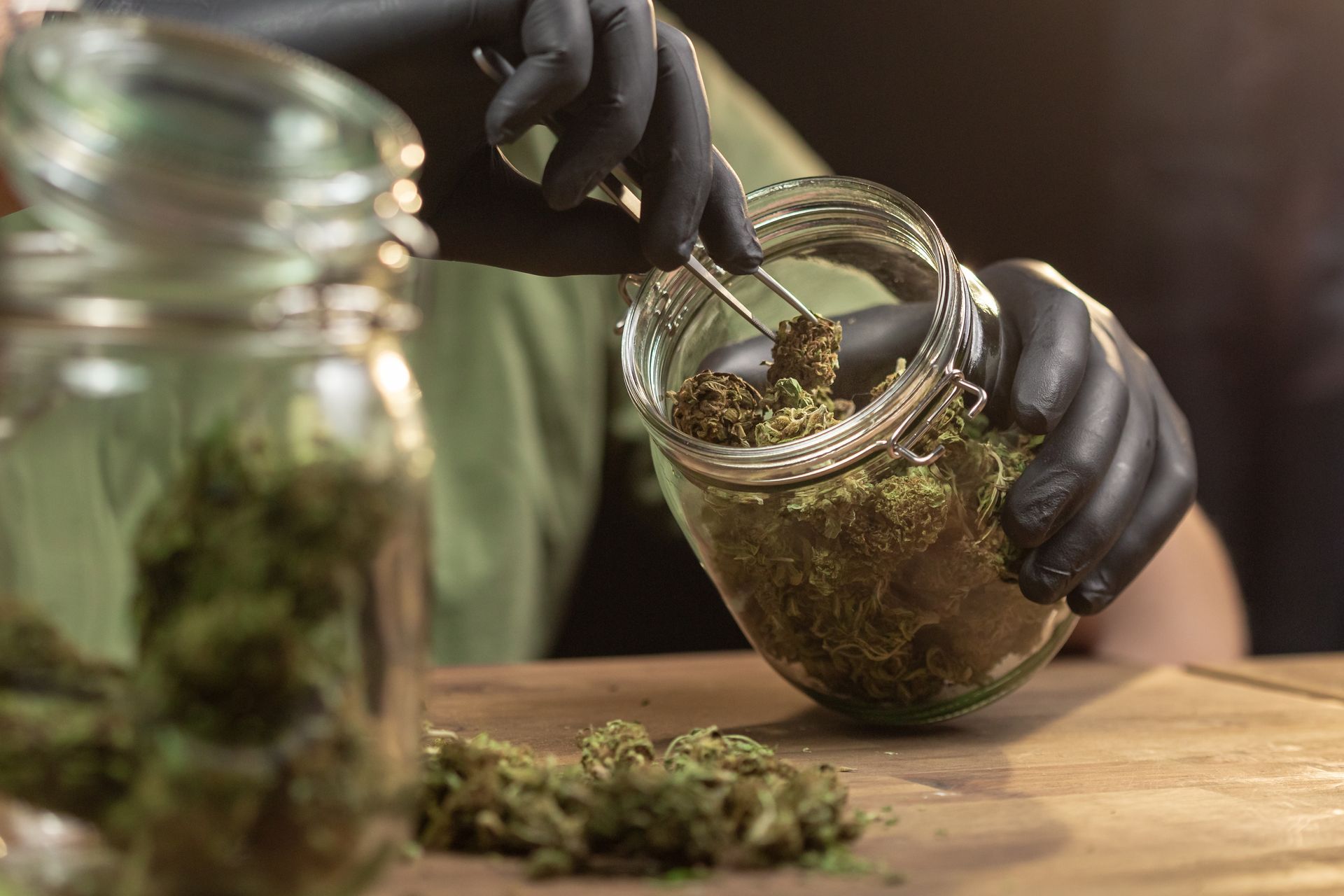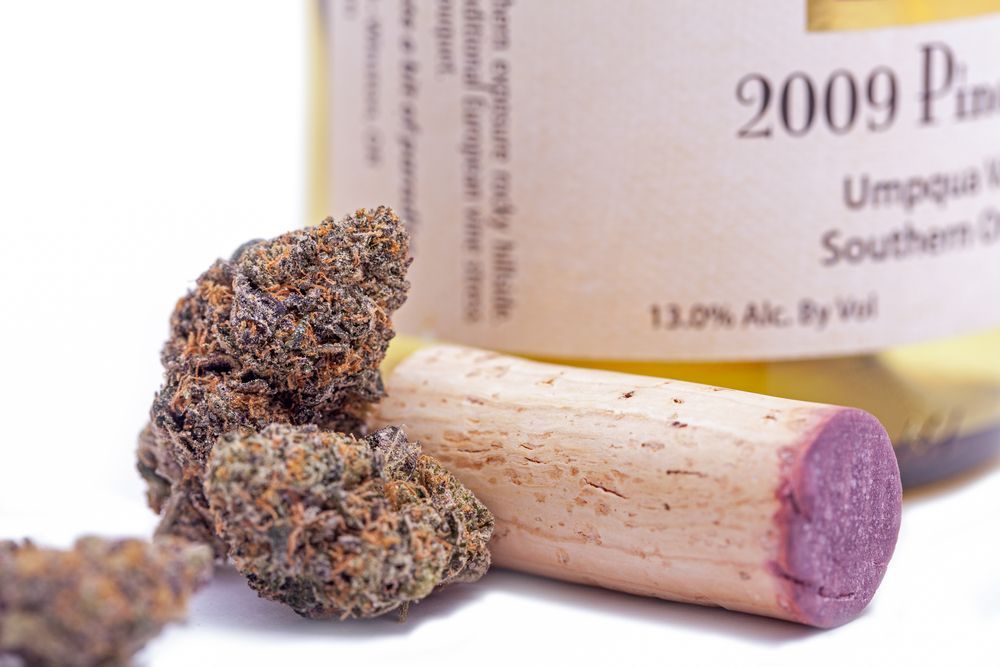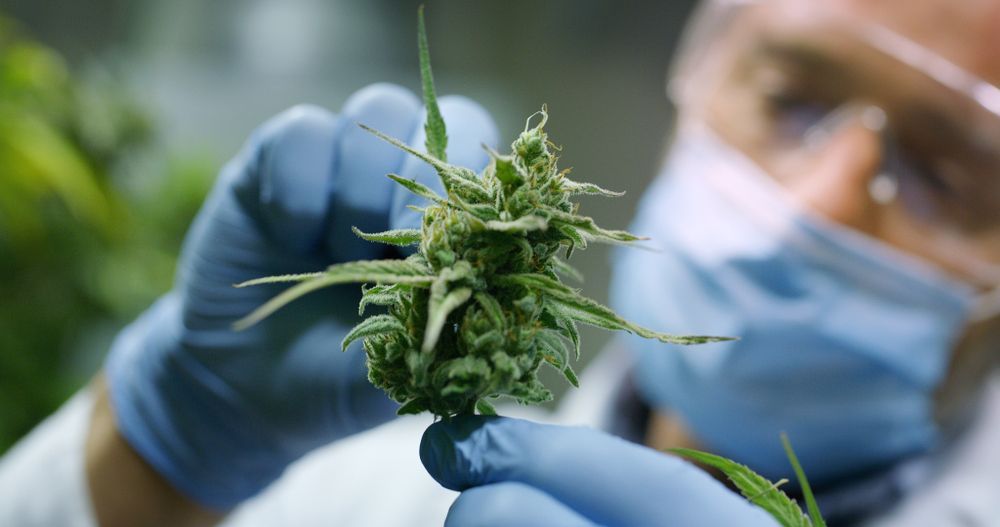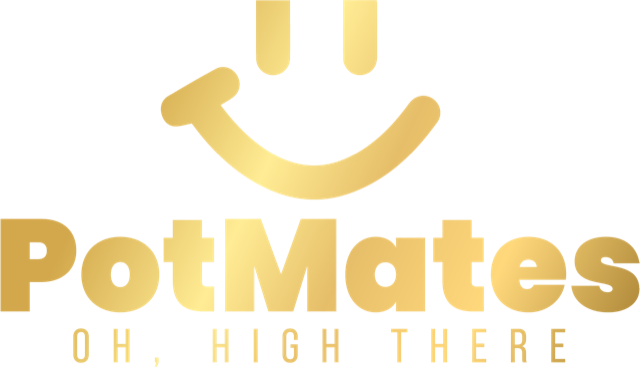The Differences Between Recreational and Medical Cannabis in Oregon
What a time to be alive! Medical marijuana first became legal in Oregon back in 1998, and we’ve been able to enjoy recreational cannabis ever since 2014. Of course, recreational weed didn’t replace the medical marijuana program, so that’s left a lot of people wondering: now that weed’s legal, why would I still need a medical card?
Before we go into the differences between Oregon’s Medical Marijuana Program (OMMP) and their recreational use laws, we want to take a moment to remind everyone out there that we at Pot Mates are cannabis enthusiasts and experts in our field—but none of us are doctors or lawyers. We’re going to bring you the best, most up-to-date information we can find, but we can’t offer medical or legal advice.
There are many benefits to having an OMMP license that include higher purchasing limits, higher growing limits, and different pricing from recreational purchases, but the most important benefit is that medical marijuana can help alleviate some of the symptoms of a number of recognized conditions.
OMMP Qualifying Conditions
If you’re considering applying for an OMMP license, our first recommendation is that you discuss the option with your doctor. You will need a statement from your attending physician to apply for a medical marijuana card. The main reason to apply is if you have one of the following medical conditions :
- Cancer
- Degenerative or Pervasive Neurological Conditions
- Glaucoma
- HIV/AIDS
- Post-traumatic stress disorder
- Conditions that cause:
- Cachexia or wasting syndrome
- Muscle Spasms
- Seizures
- Severe Nausea
- Severe Pain
There are many ways that cannabis might be useful in helping to treat the symptoms of these conditions and we have done our best to outline them in our article, “ Cannabis Health and Science.” If you have a qualifying medical condition, there are five simple questions to consider when deciding wether or not to pursue an OMMP license:
- Do you currently take any prescription or over-the-counter medications for your condition and are you interested in an alternative option for some of them?
- Do you take your medication on a daily basis?
- Have you already tried to reduce symptoms using recreational cannabis but found that you need a more reglar prescription in terms of type, quantity, and potency?
- Are you already using recreational cannabis to alleviate your symptoms, but it’s too expensive to keep paying taxes on this medicine?
- Do you want to be able to grow your own medicine but you live in an area that doesn’t allow plants to be grown for recreational use?
You’d probably benefit from having an OMMP license if you answered “yes” to any of the above questions, but that’s still a conversation we would rather you have with your doctor.
Benefits of Having a Medical Card
As an Oregon Medical Marijuana Program patient, you are entitled to certain benefits that enable you to have regular, reliable access to medical-grade cannabis and cannabis products. This means you can buy products with greater potency, purchase more of them at one time, have more in your possession, and grow more plants for your personal use than if you were simply using weed recreationally.
Potency
What do we mean when we say “medical-grade” cannabis? When a cannabis product is designed specifically to be used for medicinal purposes, it’s labeled differently and it’s allowed to have a different concentration of active components like THC. For instance, recreational cannabis edibles are limited to a maximum of 50mg THC per container, with no more than 5mg THC per serving, whereas medicinal edibles can have up to 100mg THC per container. Recreational tinctures can only contain 1,000mg of THC while medical tinctures are allowed to have four times as much.
Why is it different? Weed is weed, right? While there’s only so much THC you can find in a naturally-grow cannabis flower (it peaks at about 30–35%) there’s more room for variation with concentrates and edibles. One THC capsule could have 10mg THC or it could have 100mg. On the outside, they look the same, but one is ten times more potent than the other.
A medical marijuana patient might need to take 100mg of THC with their morning meal to manage their illness. With the recreational limit of 5mg per capsule, they would have to take ten pills every day for just this one medication! Many people with cancer, AIDS, and other illnesses already have to swallow a lot of pills, so having different limits makes it easier to manage those doses.
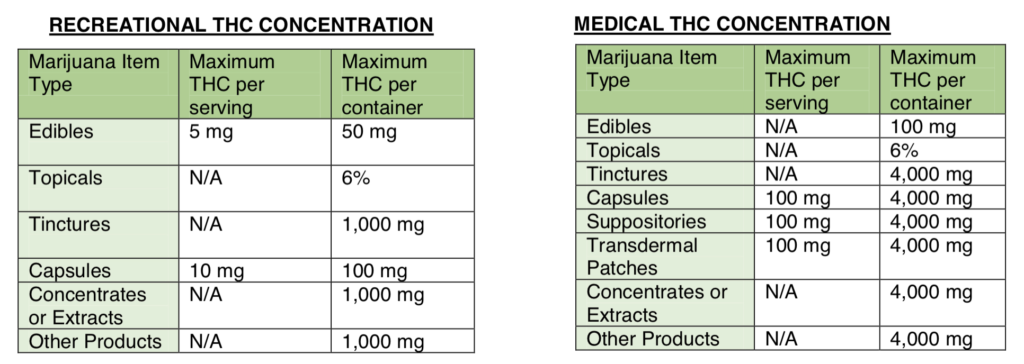
Purchase and Possession Limits
Of course, that increase in potency is no good if you can’t take it with you. OMMP patients also benefit from being able to possess up to twenty-four ounces of usable marijuana compared to the recreational user’s eight. They are also allowed to grow up to six mature plants and twelve immature plants at their residence while a recreational user can only grow four plants total. While recreational users are limited to ten, medical patients can purchase up to fifty marijuana seeds at a time.
On paper, a lot of the possession limits look the same. For instance, both recreational and medical users are allowed to have sixteen ounces of edibles or five grams of extracts, but remember the potency differences. Those sixteen ounces of medical edibles (“medibles”?) could have 100mg THC each while the recreationibles are capped at 50mg. Five grams of concentrates are also a completely different quantity when they’re allowed to have 4,000mg instead of 1,000mg THC.
Price Differences
Last, but not least, there is the question of price. An OMMP license costs $200, which is the average cost for an ounce here in Oregon, but it protects medical patients from having to pay the local and state recreational sales taxes. The state sales tax rate for recreational marijuana is 17%, and some local areas (like Portland) have added another 3% to fund community services with the proceeds. That means the same $200 ounce actually ends up costing $240! That cost can really add up if you’re using cannabis daily for medicine, and the licensing fee quickly pays for itself.
Recreational or Medical
We enjoy cannabis in all of its forms, whether it’s being used to treat the symptoms of a specific condition, or if it’s just being enjoyed for its own virtues by people who know a good thing when they see one. Recreational cannabis is legal in eleven states (and the District of Columbia) at the time of this writing, and we think it’s great that so many people are now able to indulge in their favorite pastime without fear of law enforcement trying to arrest them for it.
That being said, there are certainly thousands of Oregonians who depend on medical marijuana to make living with a debilitating disease more manageable, and we think that kind of compassionate use is equally as important—if not more so. For the people who benefit from medical marijuana, it is a life-saving alternative to other treatment options that just don’t get the job done.
If you have a qualifying medical condition, ask your doctor if cannabis might be appropriate for your treatment regimen.

